How to Create a Mediterranean Garden in Your Own Backyard, According to a Pro
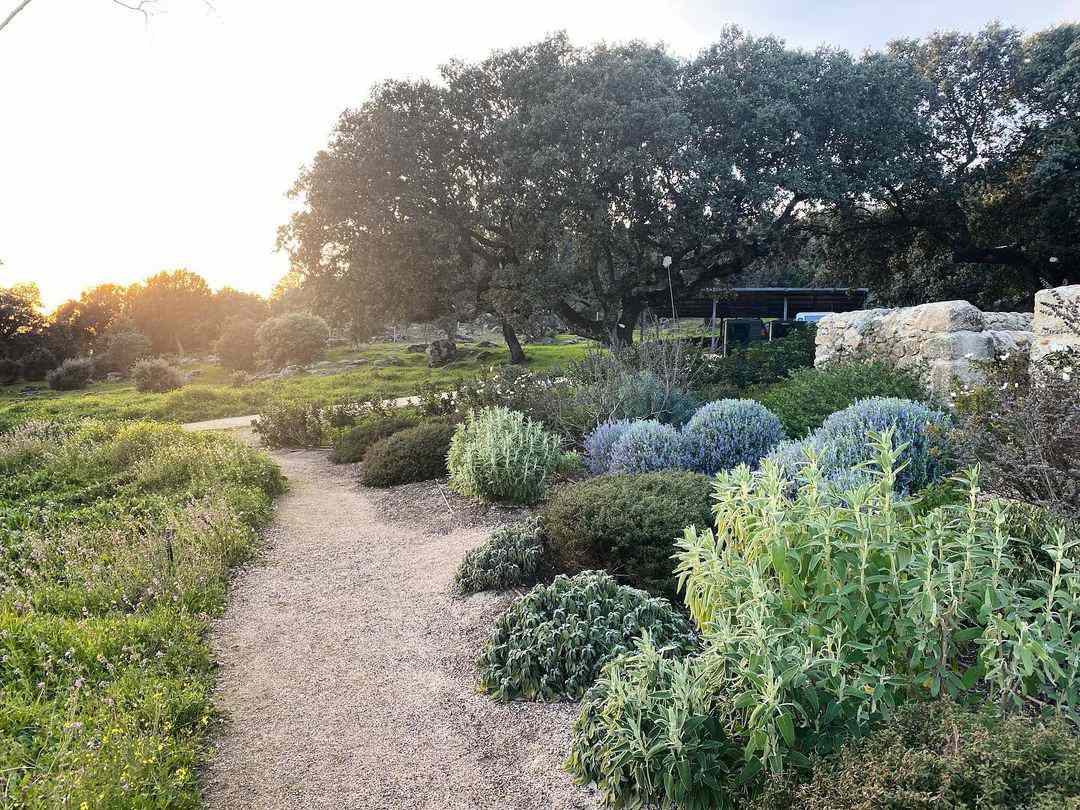
@fernandomartosjardines / Instagram
There's nothing quite like sitting for a spell in nature, especially in a Mediterranean garden. These outdoor spaces naturally put you at ease and into a vacation mindset, primarily because they reflect the beauty of coastal destinations in places like Spain and Italy.
We'll dive into exactly what defines a Mediterranean garden and how to make your backyard feel like a slice of this universally adored region.
What Is a Mediterranean Garden?
Mediterranean gardens are drought-tolerant and fragrant-filled gardens inspired by the countries along the Mediterranean Sea.
There's been a recent uptick in the popularity of Mediterranean gardens this year. We think this trend could be partially due to the increasing number of tourists to this region, plus the fact that these gardens are easy to tend. However, they still do require a little love to thrive.
"Although a Mediterranean garden is low maintenance, that doesn't mean that it is no maintenance," says Stefani Bittner, owner of Homestead Design Collective and author of The Fragrant Flower Garden. "A lot of these plants don't hold dormant growth buds on old wood, so it is important to keep them from getting too woody."
Want more gardening tips? Sign up for our free gardening newsletter for our best-growing tips, troubleshooting hacks, and more!
Plants to Include in a Mediterranean Garden
According to Bittner and her business's lead designer, Christian Cobbs, you should aim to include fragrant, harvestable, pollinator-supporting, and low-water usage plants in your Mediterranean garden. Some of their go-to plants for these gardens include:
Rosemary
Olive trees
Santolina
Teucrium
Agave
Santa Barbara Daisy
Arborvitae, spurge, jasmine, and winding grape vines are other common plants you'd see in these coastal-inspired outdoor retreats.
How to Create a Mediterranean Garden
As with any major outdoor project, it can be intimidating to know where to begin when designing your Mediterranean garden. Using pen and paper to draw out your plans ahead of time can help you envision your outdoor space. Here are a few steps to get you started.
Decide on Hardscaping
Ultimately, your backyard's blueprint will determine the number of plants you need. That's why figuring out the design of your yard's hardscaping is a good place to start. According to Bittner, gravel and stone are the two most common hardscaping materials for Mediterranean gardens.
"Gravel has such a relaxed feel to it and can be used as mulch in planting areas to seamlessly blend the planting beds with the pathways or driveways," she says.
Once you determine the material type and layout of your garden walls and paths, you can move on to selecting plants.
Select Your Plants
Start by taking an inventory of your current landscaping plants and decide what should stay and what needs to go. Then, begin brainstorming the new shrubs and decorative flowers on your dream list. One of Bittner's favorite design tricks to use is repetition.
"Repetition is important to achieving a calm and soothing effect, which is really what it is all about," she says. "Luckily a lot of Mediterranean plants have similar foliage, so it is fairly easy to achieve this."
Figure Out a Planting Plan
Now it's time for the fun part: gardening. Right after the first frost of the year is a great time to start putting your garden plans into action, and fall is another great option. Decide which features you plan on tackling yourself and what you need to contract.
Keep in mind that you don't need to plant your entire garden or build all your hardscape features all at once. Working in phases is a great way to keep the cost manageable.
10 Mediterranean Gardens for Inspiration
A Large-Scale Gravel Garden
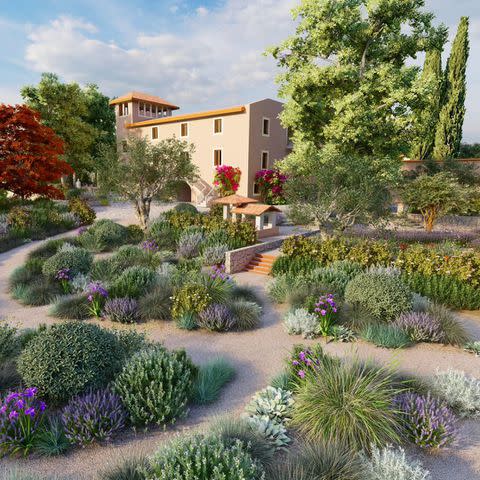
@stefanoassognagiardini / Instagram
This large-scale gravel garden in Tuscany doesn't demand too much water. Going with gravel all over is ideal for climates that don't receive enough rainfall to sustain a green lawn.
Tall Shrubs Add Privacy
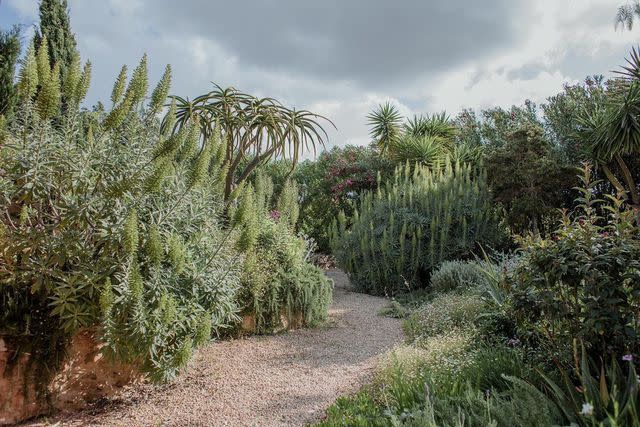
@greenhandsibz / Instagram
This garden, located on the Mediterranean Island of Ibiza, looks like a beautiful place to get lost. You can channel a similar look on a smaller scale in your own backyard. Select drought-resistant plants that grow to a maturity of more than four feet, and line your garden path with them.
Wild and Free Rock Garden

@giardino_di_hera / Instagram
This rock garden strikes the perfect balance between wild and intentional, which gives off an as-found-in-nature look. Between the clusters of rocks grow Eriocephalus africanus, Madeira rosemary, and Lavandula dentata.
Blooming Layers
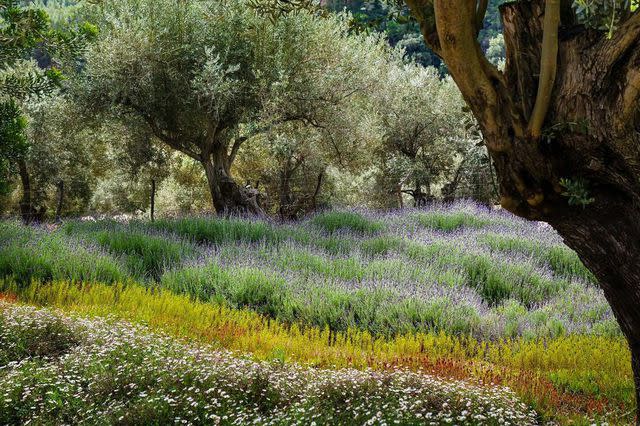
@mashambadesign / Instagram
Alternating rows of various plants create a striking contrast. Rather than blending together in a bunch, the layered look highlights each plant's unique texture and colors.
A Fragrant Escape
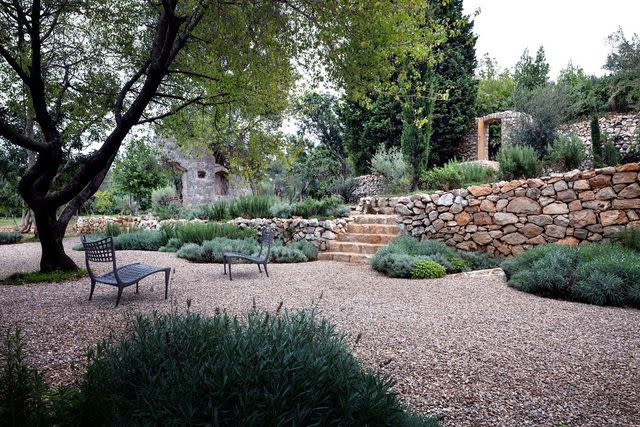
Design by @reesrobertspartners / Photo by @scottfrancesphoto / Instagram
In this little slice of Croatian paradise, scented blooms don't visually demand too much attention. However, when the island air calms down in the evening, their delightful fragrance is very evident.
Lush Garden Beds
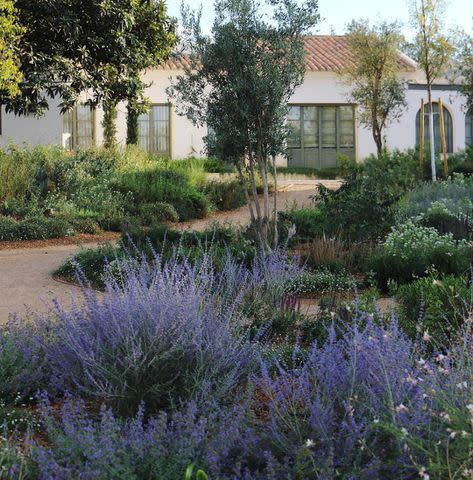
@alvarosampedropaisajista / Instagram
Mediterranean gardens prove that even dry climates can house full and healthy garden beds. The key is to carefully arrange the plants based on height and to prune as needed. That way, no plant overtakes another.
So Many Shades of Green
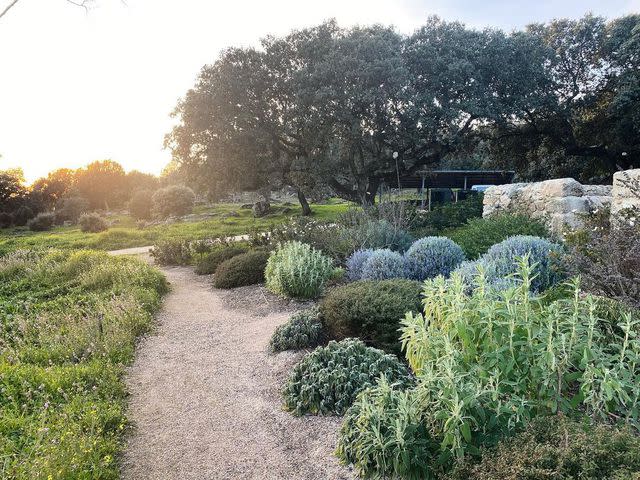
@fernandomartosjardines / Instagram
A garden in bloom is always a beautiful sight, but greenery alone is something to admire. This Mediterranean garden proves that there are countless shades of green present in nature. Some of the plants featured show off blue undertones, while others are more yellow in nature.
Stones Big and Small
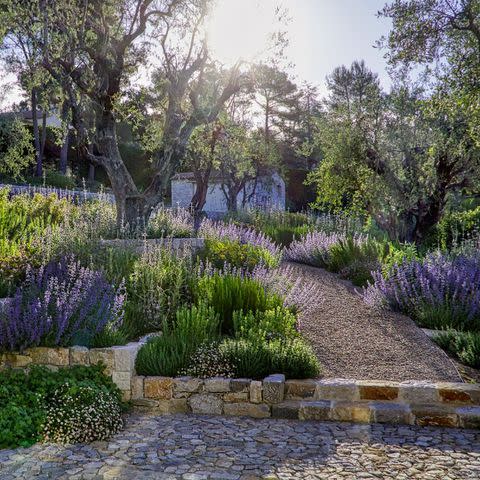
Design by @englishgarden / Photo by Guillaume Gelley
Mediterranean gardens often utilize many rocks because these regions are mineral-rich. This garden is the perfect example of how to combine rocks of varying sizes via paths and garden walls.
A Cooling Respite

@gardenslondon / Instagram
Water and tall plants provide a place to escape the sun, especially in a hot climate. A shallow pond also makes the perfect focal point for the eyes to rest and creates a nice separation between garden beds.
Living Privacy Fence
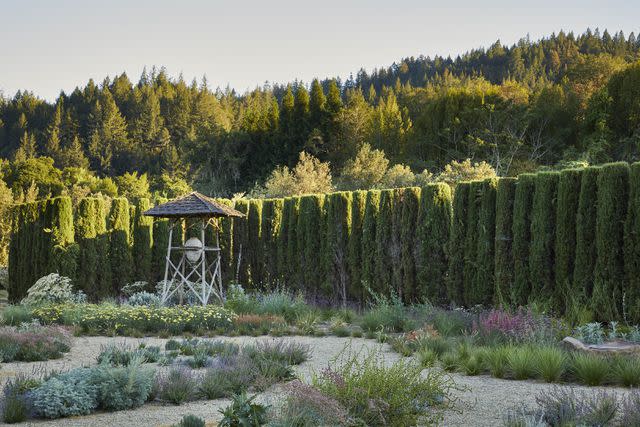
Design by Homestead Design Collective / Photo by David Fenton
When you're going for an organic gardening style, a wooden privacy fence can be a distracting sight. In this garden, a row of neatly trimmed evergreens creates a cozy sense of seclusion in a more natural way.
Read the original article on The Spruce.

